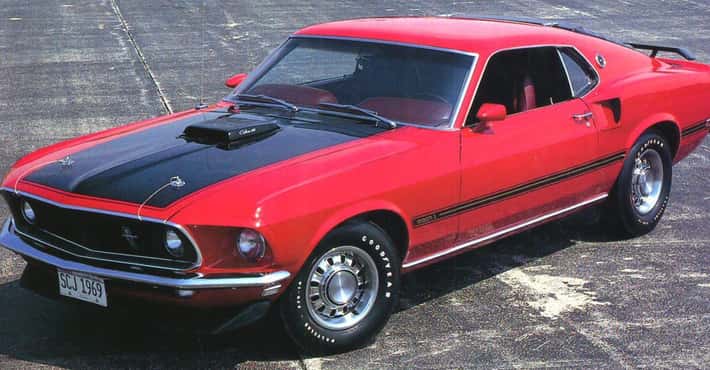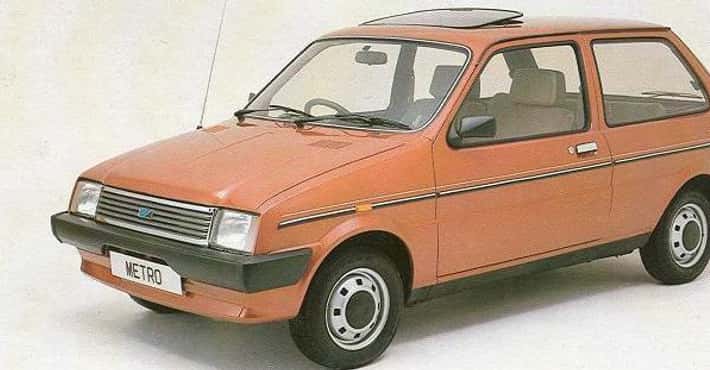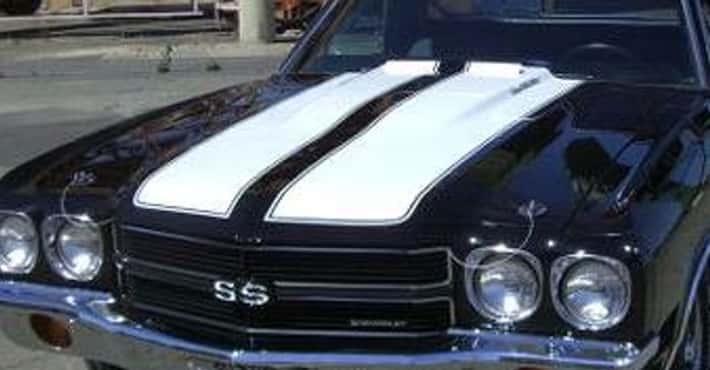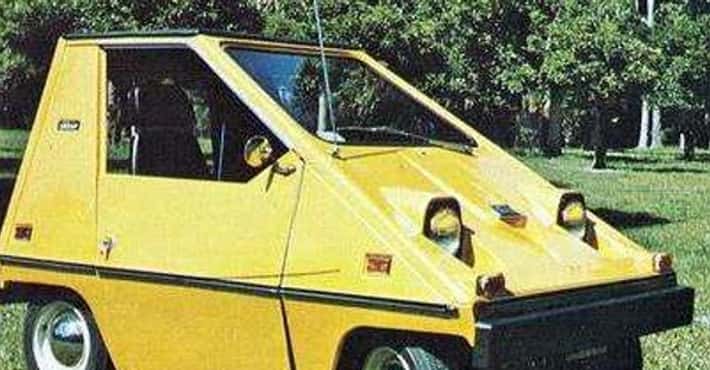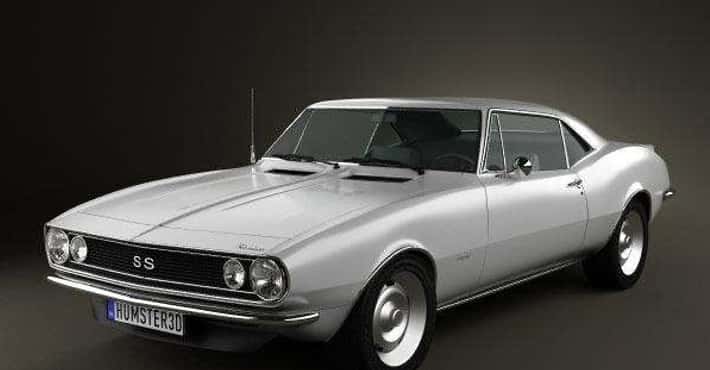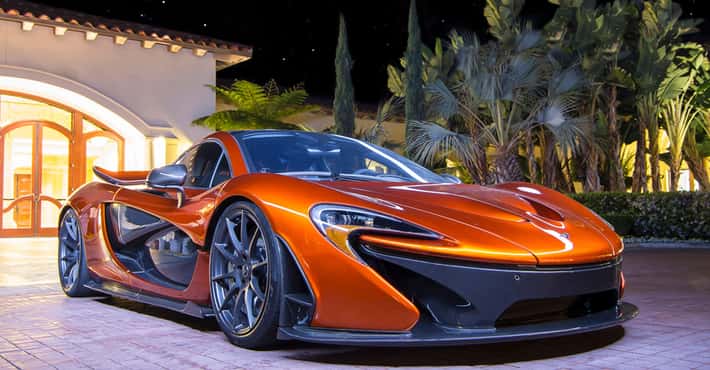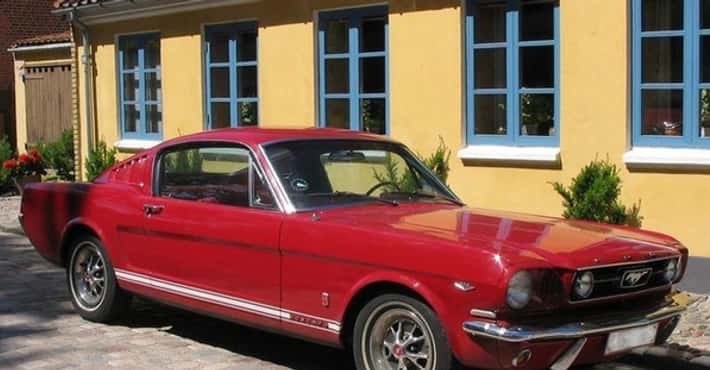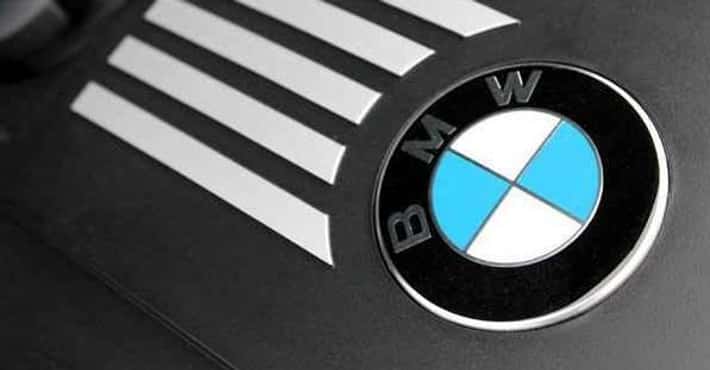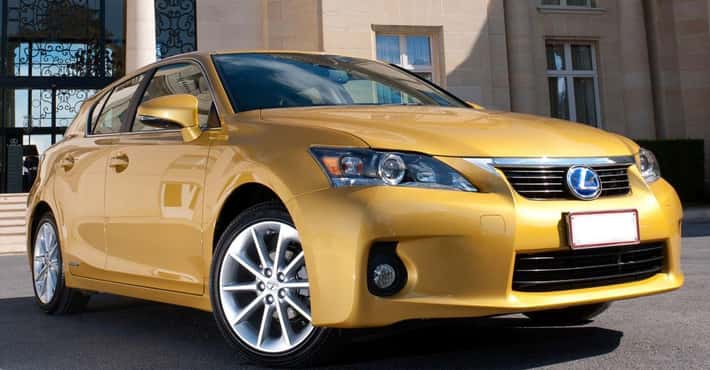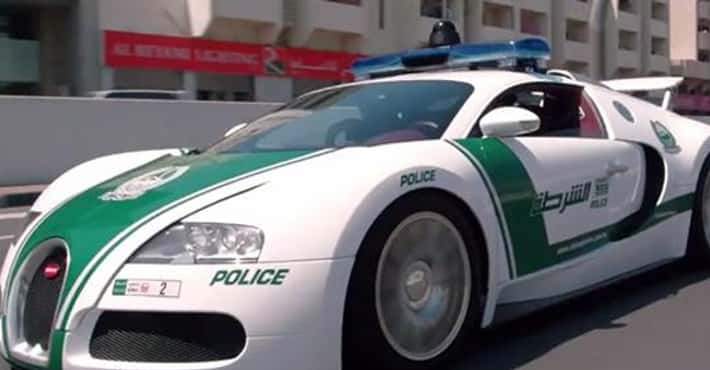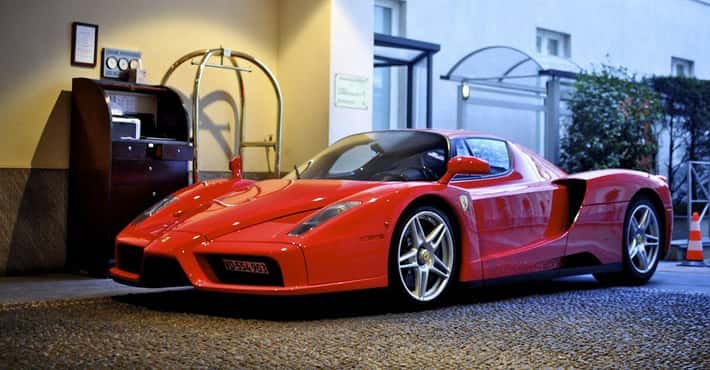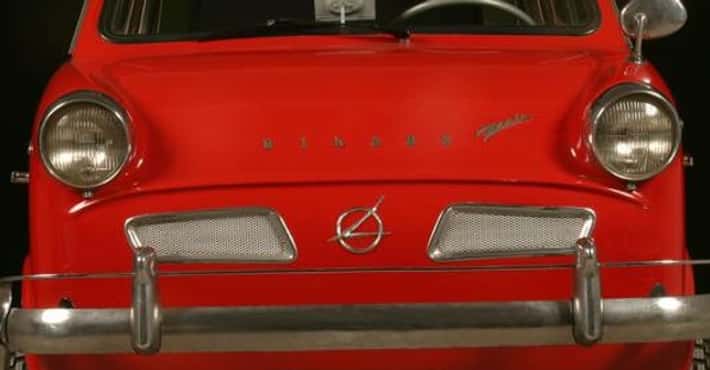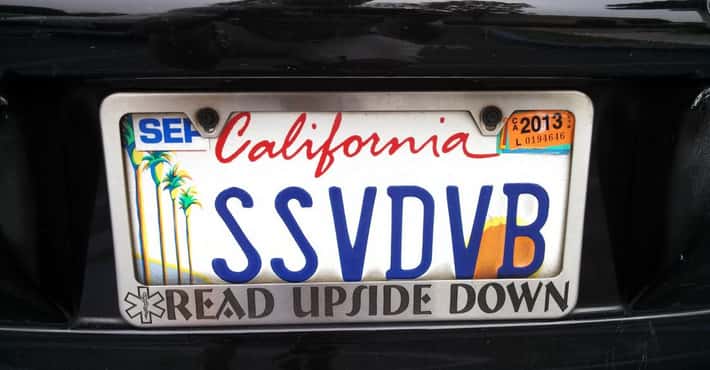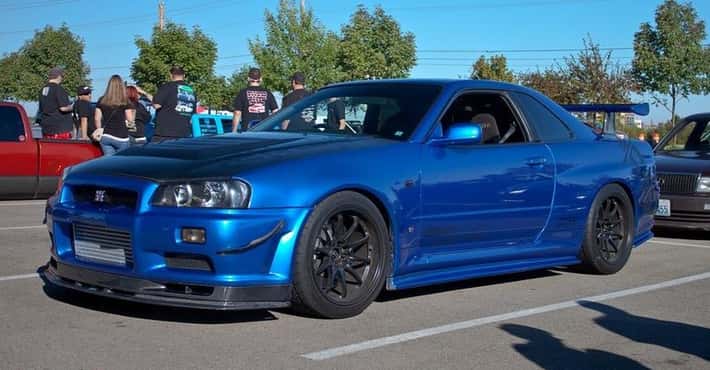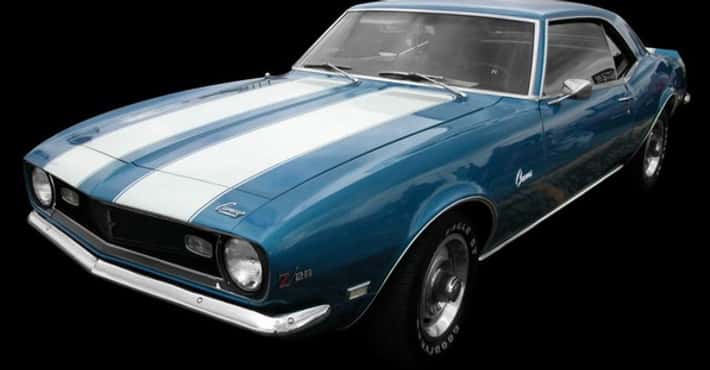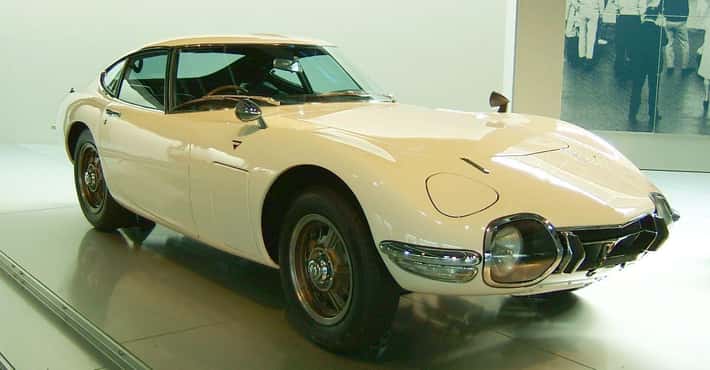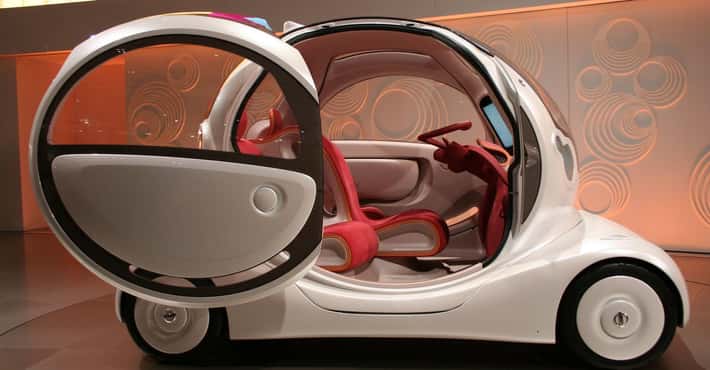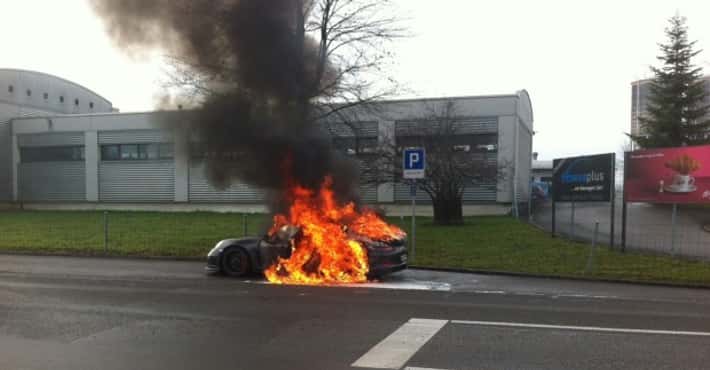Full List of Plymouth Models
- The Plymouth Barracuda is a two-door car that was manufactured by the Plymouth division of the Chrysler Corporation from 1964 to 1974 model years. The first-generation Barracuda, a fastback A-body coupe based on the Plymouth Valiant, had distinctive wraparound back glass and was available from 1964 to 1966. The second-generation 1967 to 1969 Barracuda, though still Valiant-based, was heavily redesigned. Second-generation A-body cars were available in fastback, notchback, and convertible versions. The 1970 to 1974 E-body Barracuda, no longer Valiant-based, was available as a coupe and a convertible, both of which were very different from the previous models. The final model year for the Barracuda was 1974.More Plymouth Barracuda
- #27 of 73 onThe Best 1960s Cars
- #5 of 28 onAll Of The Cars Dominic Toretto Has Driven In The 'Fast and the Furious' Movies
- #20 of 44 onThe Best Muscle Cars
- The Plymouth Road Runner was a performance car built by the Plymouth division of the Chrysler Corporation in the United States between 1968 and 1980. By 1968 the original muscle cars were moving away from their roots as relatively cheap, fast cars as they gained options. Although Plymouth already had a performance car in the GTX, it wanted to reincarnate the original muscle car concept in a car able to run 14-second quarter mile times and sell for less than US$3000. Both goals were met, and the Road Runner would far outpace the upscale and lower volume GTX.More Plymouth Road Runner
- #9 of 73 onThe Best 1960s Cars
- #3 of 28 onAll Of The Cars Dominic Toretto Has Driven In The 'Fast and the Furious' Movies
- #8 of 44 onThe Best Muscle Cars
- Photo: flickr / CC0The Plymouth Fury is model of automobile which was produced by the Plymouth division of the Chrysler Corporation from 1956 to 1978. The Fury was introduced as a sporty, premium-priced model designed to showcase the line, with the intent to draw consumers into showrooms. The word "fury" denotes a type of anger, inspired by the Furies, mythological creatures in Ancient Greek and Ancient Roman mythology.
- Photo: Metaweb (FB) / Public domainThe Plymouth Valiant was an automobile manufactured by the Plymouth division of Chrysler Corporation in the United States from 1960 to 1976. It was created to give the company an entry in the compact car market emerging in the late 1950s. The Valiant was built and marketed, without the Plymouth name, worldwide in countries including Australia, Canada, Mexico, New Zealand, South Africa, Argentina, Brazil, Switzerland, Finland, Sweden, as well as other countries in South America and Western Europe. Road & Track magazine considered the Valiant to be "one of the best all-around domestic cars."
- Photo: Metaweb (FB) / Public domainPlymouth Voyager is a nameplate used on two vans manufactured by Chrysler and marketed under its Plymouth brand. From 1974–1983 Plymouth marketed a full size van as the Voyager, a badged variant of the Dodge Sportsman. From 1984-2000, Plymouth marketed a minivan as the Voyager, simultaneously introduced with the Dodge Caravan and marketed over four generations in short-wheelbase and long-wheelbase variants — the latter as the Plymouth Grand Voyager. After model year 2000, Chrysler discontinued its Plymouth division, and the Voyager and Grand Voyager were marketed as the Chrysler Voyager. Combined with its rebadged variants, the Chrysler minivans rank as the 13th best-selling automotive nameplate worldwide.
- The Plymouth Satellite was an automobile introduced in 1965 as the top model in Plymouth's mid-size Belvedere line. The Satellite remained the top of the line model until the 1967 model year, where it became the mid-price model with the GTX taking its place as the top model. The Fury name was moved to Plymouth's mid-size models for 1975, at which time the Satellite name disappeared. The Satellite was built on Chrysler's mid-size "B" platform.
- Photo: Metaweb (FB) / Public domainThe Plymouth Acclaim is a mid-size sedan produced in the 1989 to 1995 model years. The Acclaim was Plymouth's updated replacement for the similarly sized E-body Caravelle. Badge engineering was employed to give Dodge and Chrysler their own versions of the AA-body Acclaim: the Dodge Spirit, the Chrysler LeBaron sedan, and the export-market Chrysler Saratoga. It was replaced by the Plymouth Breeze in 1996.
- Photo: Metaweb (FB) / Public domainThe Plymouth Caravelle is a mid-size sedan that was originally a 1983 Canadian model. The Caravelle came to the United States in 1985 to replace the Chrysler E-Class. It was essentially identical to the concurrent Dodge 600. It was replaced by the Plymouth Acclaim in 1989. The Caravelle was Plymouth's first front wheel drive mid-size sedan. The name of the vehicle was inspired by the word Caravel, a 15th-century sailing ship used by the Portuguese; the ship was noted for its speed and agility.
- Photo: Metaweb (FB)The short-lived Plymouth Road Runner Superbird was a highly modified version of the Plymouth Road Runner with well-known graphics and horn. It was the factory's follow up stock car racing design for the 1970 season to the Dodge Charger Daytona of 1969, and incorporated many engineering changes and modifications garnered from the Daytona's season in competition on the track. The car's primary rival was the Ford Torino Talladega, which in itself was a direct response to the Mopar aero car. It has also been speculated one motivating factor in the production of the car was to lure Richard Petty back to Plymouth. Both of the Mopar aero cars famously featured a protruding, aerodynamic nosecone, a high-mounted rear wing and, in the case of the Superbird, a horn which mimicked the Road Runner cartoon character.More Plymouth Superbird
- #16 of 25 onThe Most Badass Classic Muscle Cars
- #78 of 223 onThe Ultimate Dream Garage
- #17 of 44 onThe Best Muscle Cars
- The Plymouth GTX was introduced as the Belvedere GTX in 1967 by the Plymouth division to be a "gentleman's" muscle car.
- The Plymouth Belvedere is an American automobile model that was produced by Plymouth from 1954 to 1970.
- Photo: Metaweb (FB) / Public domainThe original Plymouth Duster is a semi-fastback two-door version of the compact-sized Plymouth Valiant automobile that was marketed by Chrysler in the U.S. from 1970 to 1976 model years.
- Photo: Metaweb (FB) / CC-BY-SA-2.0The Plymouth Cranbrook is an automobile which was built by the Plymouth division of Chrysler from 1951 to 1953. It replaced the Special Deluxe when Plymouth changed its naming scheme and was essentially the same as the Plymouth Concord and Cambridge, but at a higher trim level. The name Cranbrook may have been taken from a city in British Columbia, but it may also have been taken from Cranbrook Drive in Detroit; this small street intersected with Cambridge Avenue. Both streets are between 7 Mile Road West and 8 Mile Road West, near the Dodge Main plant. Concord Street ran by the plant. This indicates that the cars may have been named after streets near Chrysler Corporation facilities.
- The Plymouth Deluxe was a full-size automobile, produced by the Plymouth division of Chrysler, from 1946-1950. It came in two trim levels, the Deluxe and the top-of-the-line Special Deluxe. As the war in Europe wound down, the U.S. government slowly began allowing the automobile industry to return to the car-making business. It had been four years since any new cars had been built, and those cars still on the road were beginning to show their age. “The more you know about the new Plymouth… the more convinced you are that not all the beauty is on the surface. You cant see them all, but you can feel them in action.” Plymouth's new models for 1946 were once again offered in two series, the P15S Deluxe and P15C Special Deluxe. Deluxe body styles included a four-door sedan, two-door sedan, club coupe, and business coupe. Special Deluxes added a convertible coupe and wood-body station wagon to the line-up. Waiting lists were common at dealerships. Those wanting a new car placed their name, and often a cash deposit, with the dealer. Customers hoped that as new cars became available, they would move up the list until it was their turn to take delivery.
- The Plymouth Laser was a sports coupe sold under the Plymouth marque from 1989 to 1994. The Laser and its siblings: the Mitsubishi Eclipse and Eagle Talon, were the first vehicles produced under the newly formed Diamond Star Motors, a joint-venture between the Chrysler Corporation and the Mitsubishi Motors Corporation. The "Laser" name was recycled from an earlier sports coupe sold as the Chrysler Laser during the 1980s.
- The Plymouth Cambridge, was a full-size automobile, produced by the Plymouth division of Chrysler, from 1951-1953. It represented Plymouth's medium model in its lineup. When it was introduced, it came with new features such as electronic windshield wipers and downdraft carburetors. It also had "Safe-guard" brakes, that had two hydraulic cylinder per front wheel instead of just one It replaced the Deluxe, and was replaced by the Savoy for 1954.
- The Plymouth Concord, was a full-size car, produced by the Plymouth division of Chrysler, between 1951 and 1952. It was Plymouth's least expensive model in its lineup. It replaced the Deluxe, and was replaced by the Savoy, but only from 1954 onwards. The Concord Series was available in a simple Deluxe trim level. For the station wagon an additional Special Savoy top-of-the-line trim level was available.
- Photo: Metaweb (FB) / Public domainThe Mitsubishi Lancer (A70) is the first generation version of Mitsubishi's long-running Lancer nameplate. When introduced in 1973, it filled the gap between the Minica kei car and the considerably larger Galant. It can be considered as a replacement for the Colt 11-F, last sold in 1971. Although sedan production ended in 1979, vans continued on until 1985. This Lancer also formed the basis for the Lancer Celeste sports coupé of 1975 through to 1981. These Lancers were sold under a multitude of names in different markets.
- Plymouth Sport Fury was a car produced by Chrysler Corporation.
- The Plymouth Valiant Barracuda was a car produced by Chrysler Corporation.
- Plymouth Valiant Charger was a car produced by Chrysler Corporation.
- Photo: Leap Kye / FlickrPlymouth AAR 'Cuda was a car produced by Chrysler Corporation.
- Plymouth Fury 426 was a car produced by Chrysler Corporation.
- Plymouth Horizon was a car produced by Chrysler Corporation.
- Plymouth Volare was a car produced by Chrysler Corporation.
- The Plymouth Howler is a roadster concept car designed and built by Plymouth. It was first presented at the 1999 SEMA show. It is essentially a redesigned Prowler which addressed some of the complaints and problems existing Prowler owners had. The lack of cargo space in the Prowler was universally lamented, so the Howler addressed this by elongating and squaring off the back end, creating a moderate sized trunk. The Prowler was only available as a 3.5L V6 that was rated at ~250 hp at its highest. For what was considered to be a modern "hot rod", this was not considered to be enough power, so the Howler was given a 4.7L V8 - which had nearly the same horsepower, but had significantly more torque. The engine is mated to a five speed manual transmission, instead of the Prowler's four speed automatic. This freed up some room in the undercarriage to enlarge the gas tank for the thirstier V8. The Howler also has a removable hardtop instead of the traditional ragtop of the Prowler. The top is manually removed, and can be stored in a compartment behind the seats.
- The Plymouth Pronto was a small concept car released in 1997. The design was modern for its time along with several retro-style touches. The front of the Pronto resembled that of the Plymouth Prowler. The Pronto also featured a roll-back fabric top . The Pronto never went into production, but its design inspired two more concept cars, the Plymouth Pronto Spyder and the Plymouth Pronto Cruizer. The Pronto's design also inspired that of the Chrysler PT Cruiser, which did go into production in 2001. Had the Plymouth marque not been discontinued, the PT Cruiser would have been sold as a Plymouth.
- The Plymouth Plaza is an automobile which was produced by the Plymouth division of the Chrysler Corporation from 1954 through the 1958 model year. The Plaza was Plymouth's entry-level car during those years and was priced under the Plymouth Savoy. It was offered in sedan, coupe and wagon variants. Known as Plymouth's "Price Leader", in 1958 the Plaza offered buyers the widest choice of options to date. Options formerly reserved only for higher priced lines were available on the Plaza for the first time in history. The Business Coupe, which was the least produced model of Plymouth in 1958, differed from the regular 2dr Club Sedan in that the rear seat was an optional accessory. Plymouth also added a special edition to the Plaza fleet in '58. Based on a Plaza Club Sedan, the "Silver Special" had a custom paint job with silver paint on the roof and in the Sportone inserts plus a short stainless steel spear that accented the front fenders and extended partially into the front doors. The final custom touch was on the rear fins where the Silver Special bore "Forward Look" emblems instead of the traditional "Plaza" scripts.






























